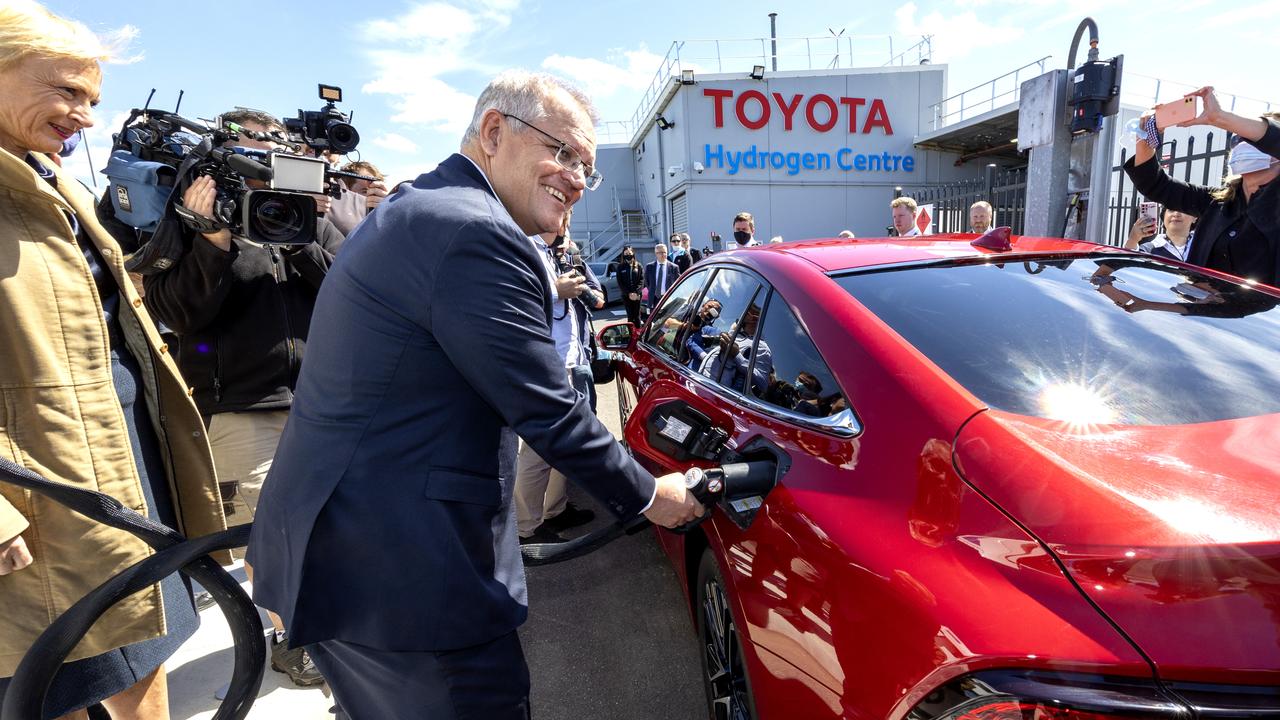ScoMo’s $1bn pledge to find technology key to reaching net zero
Scott Morrison is set to unveil a whopping $1bn fund to encourage entreprenuers to create new technologies that slash emissions.
Australian entrepreneurs dreaming up new technologies to slash emissions will receive a $1bn boost in the latest plank of Scott Morrison’s plan to reach net zero by 2050.
Modernised solar panels, more efficient batteries, livestock supplements and underground carbon storage could all be fuelled by the new fund to be unveiled by the Prime Minister in a major speech on Wednesday.
Mr Morrison kicked off his week in Melbourne with a media blitz on Tuesday, holding campaign-style events across key government-held seats including Higgins and Chisholm as he also announced his government’s plan to increase Australia’s uptake of electric vehicles.
The new low emissions technology fund will offer capital investments to help grow start-ups which may otherwise struggle to commercialise their creations, with half the money coming from the government and half to be raised from the private sector.

“Australia can become a world leader in creating low emissions technology that is both affordable and scalable, helping get emissions down while creating jobs,” Mr Morrison said.
“We are backing Australian businesses by creating an environment for their successful ideas to thrive.”
The fund will be overseen by the Clean Energy Finance Corporation, the world’s largest government-owned green bank.
Industry, Energy and Emissions Reduction Minister Angus Taylor said it would address a gap in the market where “where currently small, complex, technology-focused start-ups can be considered to be too risky to finance”.
Other prospective technologies include the direct air capture of carbon, soil carbon measurement tools, and materials to produce green steel and aluminium.
“The fund will support Australian innovators to develop their intellectual property and grow their businesses in Australia,” Mr Taylor said.

It means the government has now promised $21bn for low emissions technologies this decade, which is expected to leverage as much as $100bn in further private investment and create 160,000 jobs.
Legislation will be introduced to parliament before the next election to establish the fund, with the government also planning to expand the CEFC’s mandate to invest in carbon capture and storage.
On Monday, Mr Morrison visited the Toyota Hydrogen Centre in Altona, where he drove a hydrogen-powered vehicle and spruiked the government’s $250m future fuels strategy.
He stood by his claim at the 2019 election that Labor’s electric car plan would “end the weekend”.
“I don’t have a problem with electric vehicles. I just have a problem with governments telling people what to do about what vehicles they should drive and where they can drive them, which is what Bill Shorten’s plan was,” he said.
Mr Shorten said the Prime Minister must have “read my policy book at night time for ideas” after he offered extensive government support for vehicle charging stations.
“Imitation is the sincerest form of flattery in politics,” the former Labor leader said.
“Australia is in danger of becoming an automotive third world. The rest of the world is now sending to Australia the cars that no one else in the world wants. The rest of the world is moving to electric vehicles.”
Electric Vehicle Council chief executive Beyhad Jafari said the government’s policy — which is expected to put 1.7 million electric vehicles on the road by 2030 — was a “fizzer”.
He said the lack of subsidies, tax incentives and sales targets would hold back manufacturers from putting their best and most affordable electric vehicles up for sale in Australia.
Mr Morrison also sidestepped questions about the fuel excise revenue the commonwealth will lose as the transition to electric vehicles accelerates, saying it would have implications for the budget but that new taxes already introduced by state governments were “a matter for them”.
More Coverage
Originally published as ScoMo’s $1bn pledge to find technology key to reaching net zero





